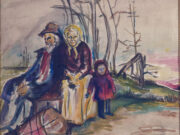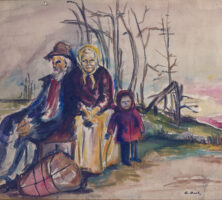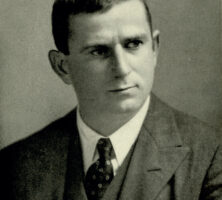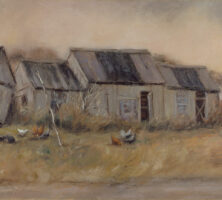Alexander Brook, a leader among New York City’s mainstream figurative painters during the 1930s, painted numerous scenes based on his observations in Savannah. Trained in the American realist tradition of painting, Brook’s landscapes, portraits, and genre scenes are largely devoid of overt or hidden social meaning and are characterized by subdued colors and strong, weighty shapes.
Early Life and Career
Alexander Brook was born in Brooklyn, New York, on July 14, 1898. He was the youngest child and only son of Russian immigrants Eudoxia Gelescu and Onufri Brook. At the age of twelve, Brook contracted polio and was bedridden for almost one year. His formal education in public school essentially ended with his illness, and Brook became interested in painting.

Courtesy of Morris Museum of Art
He directed his own education by using the public library, visiting the Metropolitan Museum of Art each week, and enrolling at the Art Students League in 1915. Over the next four years he studied with Kenneth Hayes Miller, John C. Johansen, Frank V. DuMond, George Bridgman, and Dimitri Romanovski. His diligent study was rewarded with scholarships, prizes, and close friendships with fellow art students, including Peggy Bacon, whom he married in 1920.
After their marriage, the couple left for Great Britain, where their daughter, Belinda Bacon Brook, was born in 1920. Upon their return, the family divided their time between a summer home in Woodstock, New York, and a series of apartments in New York City. Their second child, Alexander Bacon Brook, was born in 1922, the year of the couple’s first major exhibition.
From 1923 to 1924 Brook supplemented his income by writing articles for the journal The Arts. During those years he came to the attention of Gertrude Vanderbilt Whitney, who had established the Whitney Studio Club in order to promote and exhibit the work of emerging artists. In 1923 Brook organized the first exhibition at the club’s expanded facility, and from 1924 to 1927 he worked as an assistant to Juliana Force, the director of the club. The club evolved into the Whitney Museum of American Art in 1931.
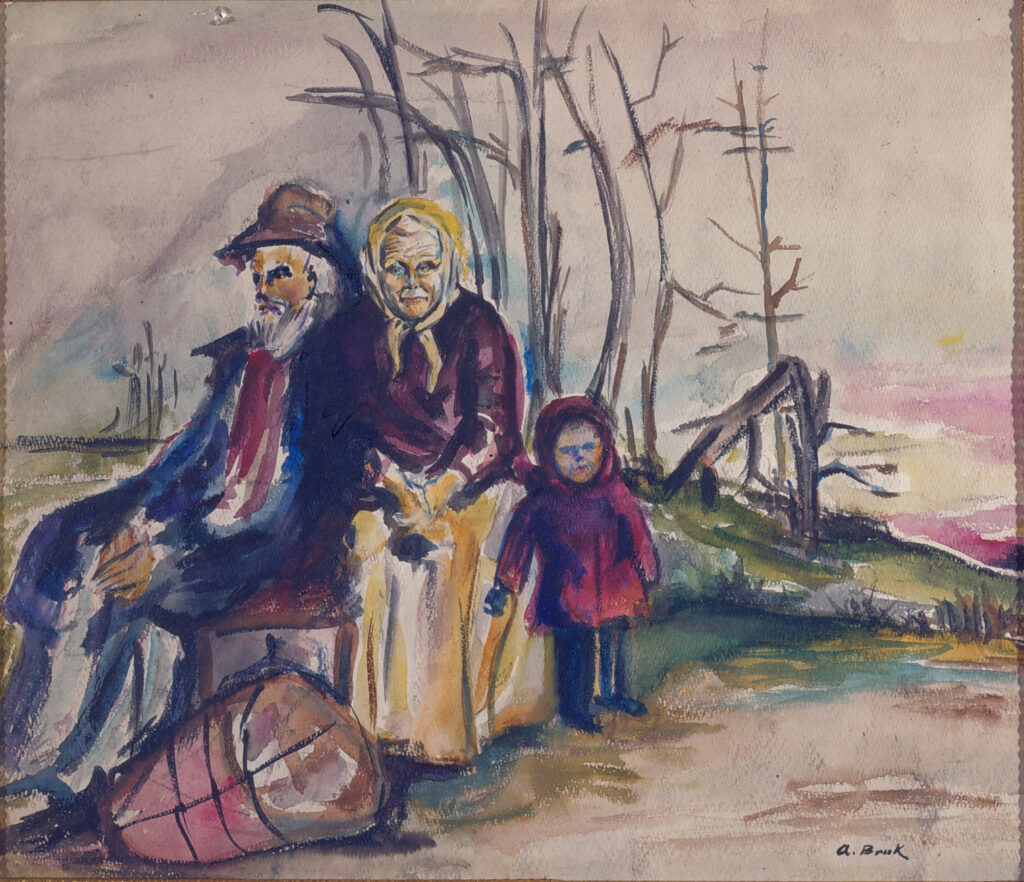
Courtesy of Morris Museum of Art
During this period Brook painted portraits, genre scenes, and a widely exhibited series of canvases depicting women. He was awarded the Mr. and Mrs. Frank G. Logan Medal by the Art Institute of Chicago in 1929. The following year marked the first time his work entered the Carnegie International exhibition, and he was awarded a second prize. (Renowned Spanish artist Pablo Picasso won the first prize.) A Guggenheim Fellowship in 1931 enabled the Brook family to travel to Spain, Italy, Germany, Austria, and France, and his work continued to garner awards. In addition, Brook taught at the Art Students League from 1933 until 1936.
Savannah Years
Around 1938 Brook moved to Savannah, establishing residence in a studio at Factor’s Walk, a former cotton warehouse along the Savannah River. Brook stayed for several months and began an association with the city that lasted for a decade. His visits included trips to the Yamacraw district, one of the city’s oldest Black neighborhoods. Situated in northwest Savannah, Yamacraw was home to many impoverished African Americans. Brook often sketched there, and paintings based on those sketches were exhibited throughout the country. One of the paintings, Georgia Jungle, housed at the Carnegie Museum of Art in Pittsburgh, Pennsylvania, was awarded first prize in 1939 at the Carnegie International exhibition.

Courtesy of Morris Museum of Art
In 1939 Brook worked in Washington, D.C., and in Los Angeles, California. He and his wife were divorced in 1940, and Brook returned to Savannah with his second wife, Libby Bergere (or Berger, according to some sources). After his second marriage ended, Brook returned to New York, where he resumed teaching at the Art Students League in 1942-43. During World War II (1941-45), Brook served as an army correspondent in Panama, providing sketches for the military. When the army released him, Life magazine commissioned him to continue his war effort as an illustrator and, later, to produce a series of portraits of Hollywood actresses.
In 1944 Brook returned to Savannah as a resident with his third wife, Gina Knee, also an artist. Although they lived in Savannah for only part of the year, their studio became a gathering place for local artists, and they became actively involved in local causes, including the library and theater. During this time, Brook exhibited, wrote articles for journals, and produced two original covers for the Saturday Evening Post.
The couple left Savannah in 1948 and purchased a home at Sag Harbor on eastern Long Island, New York, where they lived for the rest of their lives. After a 1952 solo exhibition at Knoedler Galleries in New York, Brook withdrew from active participation in the art world. Feeling that his realist style of art was no longer well received, he gave up painting around 1966. He died on February 26, 1980.
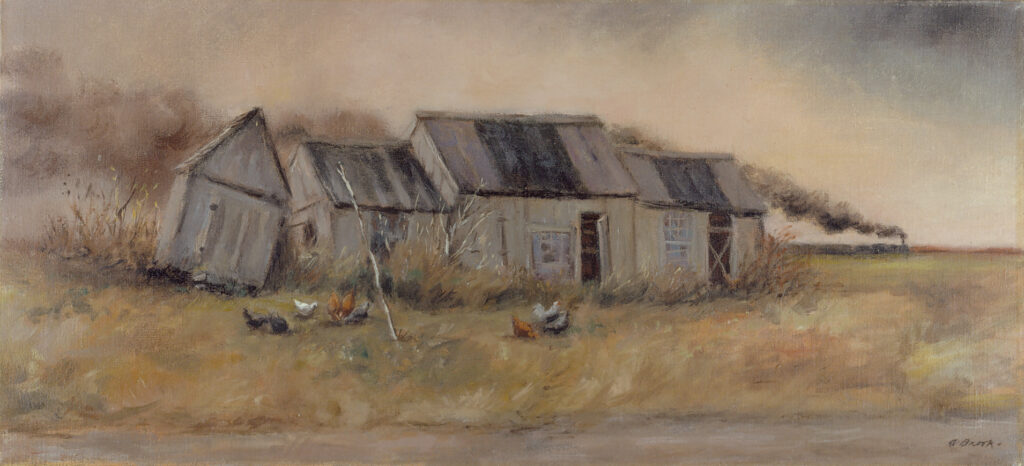
Courtesy of Morris Museum of Art
Brook’s work is found in numerous museum collections, including Telfair Museums in Savannah and the Morris Museum of Art in Augusta; the Cleveland Museum of Art and the Butler Institute of American Art in Ohio; the Smithsonian American Art Museum in Washington, D.C.; and the Whitney Museum of American Art in New York City.


